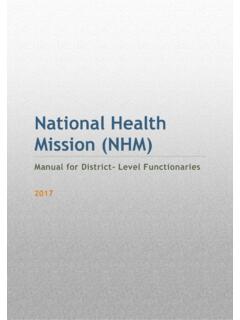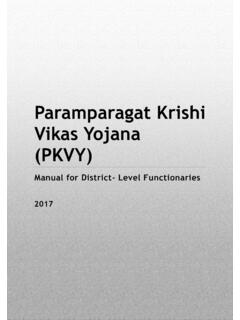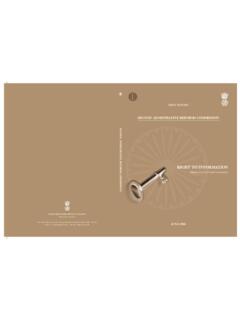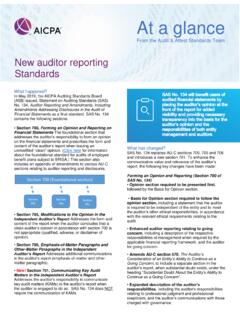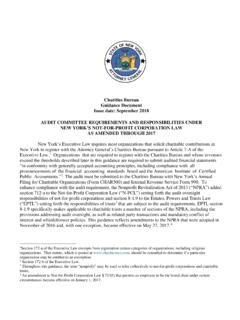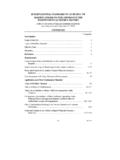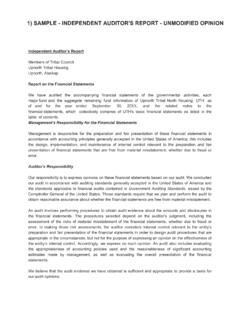Transcription of MANUAL - darpg.gov.in
1 CENTRAL SECRETARIAT MANUAL OF OFFICE PROCEDURE FOURTEENTH EDITION MINISTRY OF PERSONNEL, PUBLIC GRIEVANCES AND PENSIONS DEPARTMENT OF ADMINISTRATVE REFORMS AND PUBLIC GRIEVANCES MAY 2015 (website: ) IMPORTANT WEBSITES Secretariat : Minister s Office : Secretariat : of Administrative Reforms & Public Grievances : of Personnel, Public Grievances & Pensions : of Finance : of Home Affairs : Informatics Centre : Archives of India : TABLE OF CONTENTS Content Para No. Page No. 1. CHAPTER I - INTRODUCTION 1 2. CHAPTER II - DEFINITIONS 2-3 3. CHAPTER- III- STRUCTURE OF THE GOVERNMENT 4 Government 1 4 Allocation/Transaction of Government Business 2 4 Ministry/Department 3 4 Attached Offices 3(i) 4 Subordinate Offices 3(ii) 5 Constitutional Bodies 4 5 Statutory Bodies 5 5 Autonomous Bodies 6 5 Public Sector Undertakings 7 5 Functions at various levels 8 6 4.
2 CHAPTER IV - MANAGEMENT OF DAK 9 Receipt of dak 9 9 Acknowledgement of dak 10 10 Registration of dak 11 10 Distribution of dak 12 10 5. CHAPTER V - FILE MANAGMENT 11 Standard Process Sheets 13 11 Level of disposal & channel of submission 14 11 Guidelines for noting 15 12 Modification of notes or orders 16 12 Noting on files received from other Departments 17 13 Aids to processing 18 13 Oral discussions 19 14 Oral instructions by higher officers 20 14 Oral orders on behalf of or from Minister 21 14 Confirmation of oral instructions 22 15 Filing of papers 23 15 Arrangement of papers in a file 24 16 Referencing 25 17 Linking of files 26 18 Use of urgency grading 27 18 6.
3 CHAPTER VI - FORMS & PROCEDURE OF communication 19 Forms of communication 28 19 Correspondence with attached & subordinate offices 29 28 Single File System 30 29 References to the Attorney-General of India 31 30 References to Constitutional/Statutory Authorities 32 30 References to the Comptroller & Auditor General of India 33 30 Correspondence with Union Territories Administration 34 31 Correspondence with State Governments 35 31 Correspondence with Lok Sabha & Rajya Sabha Secretariats 36 31 Correspondence with Members of Parliament/VIPs 37 31 Correspondence with Ministers of State Governments 38 32 Correspondence with foreign governments and international organisations 39 33 Target date for replies 40 33 7.
4 CHAPTER VII - DRAFTING OF communication 34 Procedure for drafting 41 34 General instructions for drafting 42 34 Authentication of Government orders (Ministry of Home Affairs) 43 34 Addressing communications to officers by name 44 35 8. CHAPTER VIII - FILE NUMBERING SYSTEM 36 Functional file numbering system 45 (I) 36 Subject classification based file numbering system 45(II) 37 Part File 45(III) 37 Unique e-file number 45(IV) 38 Transfer, reconstruction and numbering of files 46 38 Movement of files 47 38 9. CHAPTER IX - RECORDS MANAGEMENT 39 Activities involved in records management 48 39 Stage/procedure for recording 49 39 Categorization of physical records 50 39 Precedent Book 51 39 Record Retention Schedule 52 39 Records maintained by officers and their personal staff 53 40 Requisitioning of records 54 40 10.
5 CHAPTER X - SECURITY OF OFFICIAL INFORMATION AND DOCUMENTS 41 communication of official information 55 41 Treatment of classified papers 56 41 Handling of classified papers 57 42 communication of information to the press 58 42 Use of restrictive classification for printed reports etc. 59 42 11. CHAPTER XI - CHECKS ON DELAYS 43 Timely Disposal of receipts and monitoring of Parliamentary Assurances, Parliament Questions, Applications under RTI Act, MP/VIP References, CAT/Court Cases, etc. 60 43 12. CHAPTER XII - MISCELLANEOUS 44 Departmental instructions 61 44 Maintenance/transfer of records in the personal offices of Ministers 62 44 Maintenance of Websites 63 44 Citizen s/Client s Charter 64 45 CHAPTER-I INTRODUCTION The efficiency of an organization depends largely on evolution of adequate processes and procedures and the ability of its employees to follow them.
6 Accordingly, the efficiency of persons handling secretarial work in a government organization can be judged by their ability to dispose of matters mostly receipts, cases etc. with speed and quality, following the procedures prescribed for the purpose. The ultimate object of all Government business is to meet the citizens needs and further their welfare. At the same time, those who are accountable for fair conduct of business have to ensure that public funds are managed with utmost care and prudence. It is, therefore, necessary, in each case, to keep appropriate record not only of what has been done but also of why it was so done. The procedures prescribed in the Central Secretariat MANUAL of Office Procedure (CSMOP), attempt to balance the conflicting considerations of speed, quality, transparency and propriety.
7 In a dynamic context, this balance cannot be rigidly or permanently fixed. Every rule and step in the procedure must serve a definite purpose. The First Edition of the CSMOP was published in March, 1955 and since then it has been updated from time to time to take care of the changing scenario. The 13th Edition of the CSMOP came in the month of September, 2010. This edition of the CSMOP is quite voluminous and hence it does not receive the required attention of Government Employees to read it. The edition of the CSMOP which is being brought is the 14th in the series. A number of entries which existed in the earlier CSMOPs and are also available in different documents & manuals specific to the subject have been removed.
8 The new CSMOP has been prepared with a view to remove redundancy, duplication and also doing away with a number material which can easily be taken from the various Government websites. It is expected that the revised 14th Edition of CSMOP, which has a lesser number of pages in comparison to the earlier CSMOPs will receive greater attention by the Government officials and the work will be performed in a systematic and faster manner. 1 CHAPTER II DEFINITIONS Definitions The Definitions of some of the terms used in the MANUAL are:- (1) Appendix to correspondence/file : Detailed/lengthy enclosures to a communication /file. (2) Branch the Unit of a Division and may comprise a couple of Sections/Units/Cells.
9 (3) Branch Officer for a section the officer who is directly above the section in the line of control of execution of work. (4) Case a current file or a receipt together with other related papers, if any. (5) Central receipt and issue section - A unit within a department consisting of the central registry and the central issue section. (6) Classified dak dak bearing a security grading confidential, secret (7) Correspondence portion the portion of file containing receipts and office copies of the communications issued from the file include self-contained inter-departmental notes but excluding those recorded on the notes portion of the file itself.
10 (8) Current file A file on which action is not yet complete. (9) Dak All communication received/issued by an office/department. (10) Dealing hand Any functionary entrusted with initial examination. (11) Department Any of the Ministries, Departments, Secretariats and Offices mentioned in the First schedule to the Government of India (Allocation of Business) Rules, 1961, as amended from time to time. (12) Departmental instructions Instructions issued by a department to supplement or vary the provisions of the MANUAL of Office Procedure. (13) Departmental Record Officer (DRO) Officer nominated under the Public Records Act 1993.

